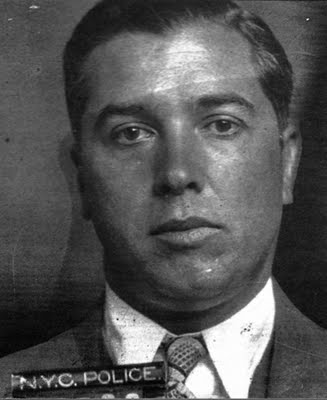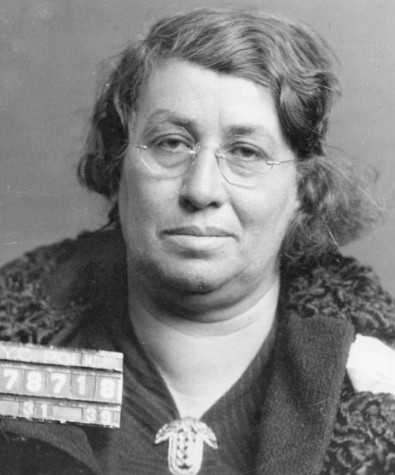Byline: C.F. Marciano | 1949 Retrospective Crime File
In the shadowy world of 1930s and ’40s Brooklyn, where the smoke of the docks mingled with the perfume of bootlegged gin, a woman named Lena Frosch ruled an empire forged not with bullets, but with bail slips.
A former seamstress from Crown Heights turned underworld financier, Lena Frosch became infamous as one of the most powerful — and feared — bonds ladies in New York. While her male counterparts flexed muscle on the streets, Lena moved in silk gloves through courtrooms, police precincts, and back alleys with the quiet ruthlessness of a queenpin. Her currency wasn’t violence. It was leverage.
From Seamstress to Silent Syndicate
Born in 1902 to Austrian-Jewish immigrants, Lena Frosch was raised in a tenement above a kosher butcher on Bergen Street. Her father, a modest Talmudic scholar, died penniless in 1917. Her mother took in boarders. By 1922, Lena had married a minor mob courier — Morris “Moe” Frosch — a bagman for the notorious Abe Reles of Murder Inc.
When Moe was arrested on a hijacking charge in 1928, Lena pawned her wedding ring and used the money to secure a loan for his bail. That experience awakened something in her. By the early 1930s, she had quietly established Frosch Bail Services — a “legit” business with its office above a laundromat in Flatbush. But the clients weren’t exactly upstanding citizens.
She catered to mobsters.
The Mob’s Favorite Matron
When the likes of Albert Anastasia, Joe Adonis, or Vito Genovese had associates cooling in The Tombs, they didn’t send lawyers — they sent Lena.
She moved between courthouses in tailored gray coats and fox furs, her hair always in a sharp wave, her eyes hidden behind smoked cat-eye glasses. Police and clerks alike whispered about the woman who could get men accused of murder out on bond before the ink on the arrest warrant dried.
Her trick was knowing which judges could be persuaded, and how much “insurance” a man’s life was worth.

A System Rigged with Silk Strings
The bail bond system of the 1930s was already ripe for manipulation. Judges had wide discretion, and the Mafia had long infiltrated the legal machinery. But Lena introduced a new dimension — she created bundled bonds, offering group rates for entire crime crews, often backed by obscure real estate or jewelry.
One court clerk later testified:
“I saw her post a $20,000 bond using a pawned Fabergé egg, two deeds from the Bronx, and a single word from Meyer Lansky. Judge signed off without blinking.”
Lena operated with selective loyalty. She would bond out a soldier in the morning and testify at his bail revocation hearing by night if the right rival paid her more. Her only allegiance was to power — and survival.
The Disappearance of Joey “No Ears” and the Blood-Stained Ledger
In 1941, her influence was threatened. Joey “No Ears” Collucci, a low-level enforcer, threatened to expose Lena’s laundering network. Days later, his body was found floating in the Gowanus Canal — his ears crudely sewn back on in a mockery of mercy.
Rumors swirled that Lena had arranged the hit through ties to Vincent Mangano. The ledger Joey had stolen — said to list every judge, cop, and bagman Lena had ever paid — was never found.
Until 1952.
That year, during demolition of her former office building, workers discovered a safe embedded in the wall. Inside were dozens of sealed bond slips, cash, and a small black notebook. Most names were redacted before reaching the press, but sources claim two Supreme Court justices retired immediately thereafter.
Fade to Black
Lena disappeared from public life in 1947. Some said she fled to Havana with a Sicilian banker. Others believed she entered witness protection after turning state’s evidence against the Anastasia family. To this day, her death remains unrecorded. What’s left are whispers, case files, and court records that speak to a woman who held the strings of gangland Brooklyn — not by gun, but by guarantee.
Closing Note
In the annals of New York crime, the Lena Frosches are often footnotes — nameless facilitators, power brokers who never pulled a trigger but orchestrated wars. Yet in the smoky courtrooms of Brooklyn, her name was once spoken with the same caution as Capone’s — not too loudly, and never in vain.


